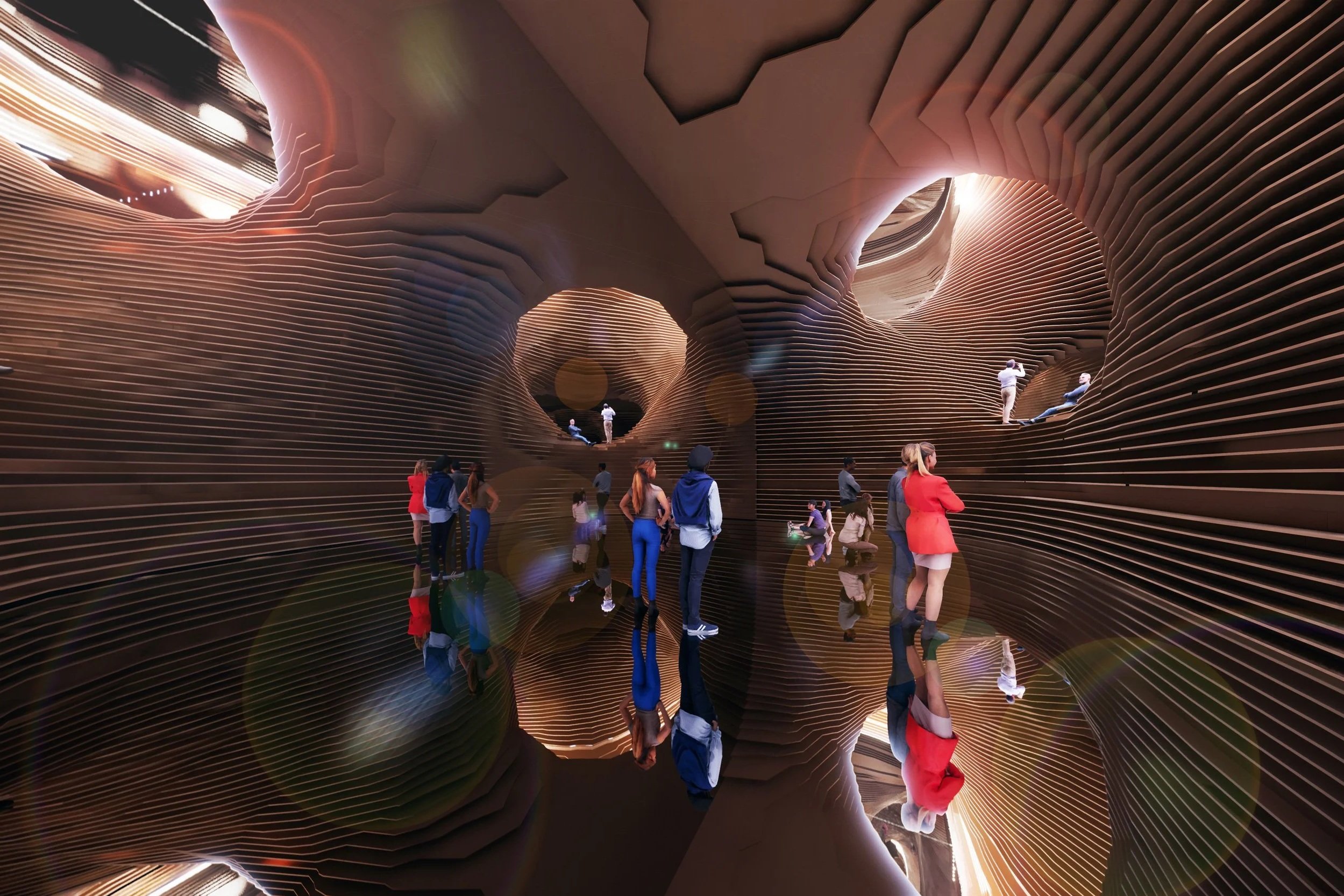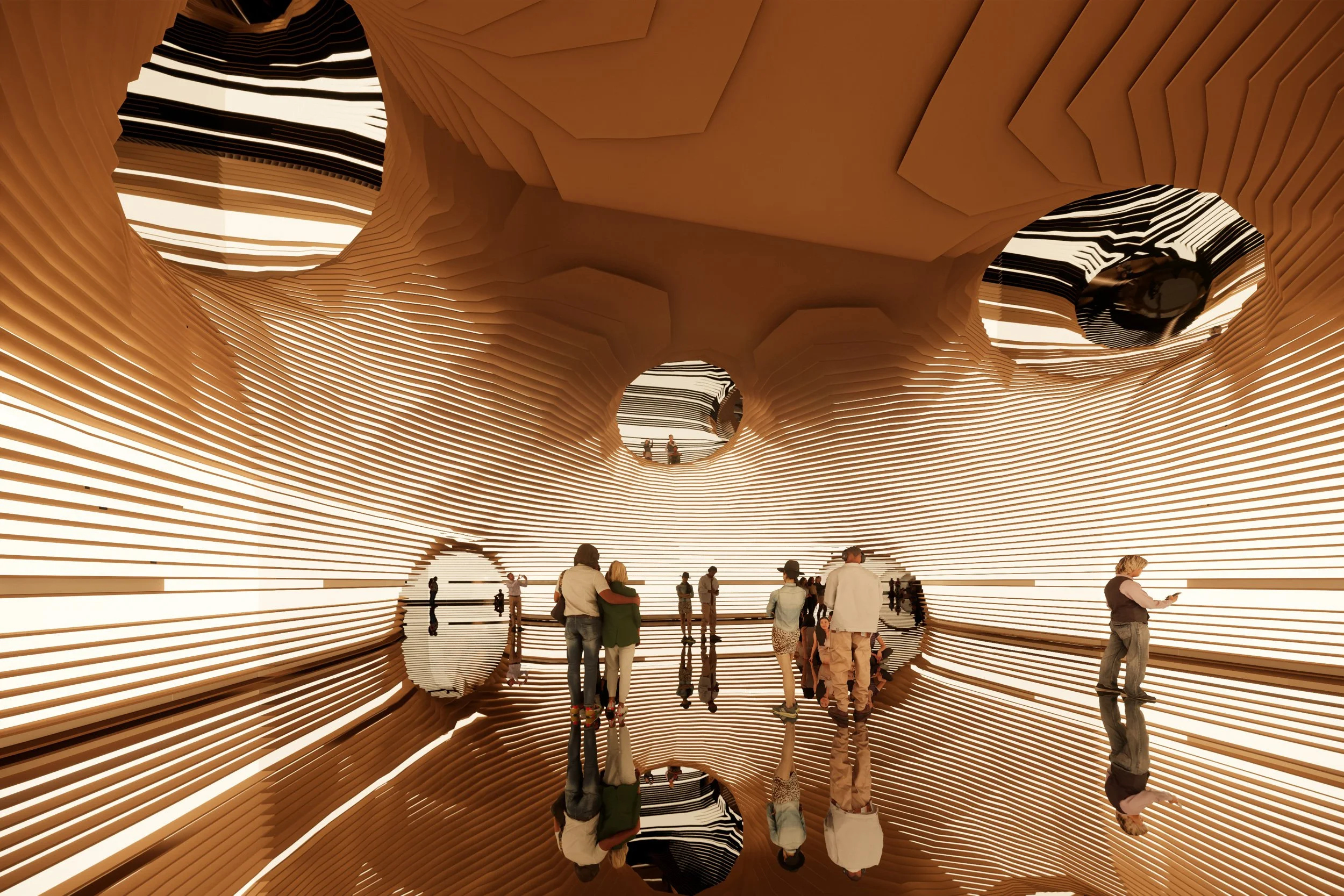
Kaleidoscope
Is scale an absolute, or simply a matter of perspective?
Kaleidoscope Pavilion
A ‘reflection’ on the Powers of Ten
Nature doesn’t just build — it computes. From the microscopic to the cosmic, it assembles forms with stunning regularity, fractal beauty, and silent logic. What if we could step inside that logic — inhabit a space that mirrors the recursive intelligence of nature itself?
This pavilion proposal is that invitation. Inspired by the iconic Powers of Ten and the self-similar geometries of natural systems, it explores a radical question: Is scale an absolute, or simply a matter of perspective?
A Journey into Scale, Symmetry, and the Infinite
Far from a conventional structure, this pavilion operates as a three-dimensional model of natural computation — a recursive, mirrored space that allows users to step into the infinite. It challenges our relationship to scale and space, offering a rare moment to recalibrate perception in a world that moves too fast to notice its own patterns.
Constructed as a box within a box, the pavilion skins use a modular system based on standard size 1200 x 2400 mm sheets — with an exterior of raw OSB and an interior wrapped in mirrors. Inside, a fluid, continuous surface is made of a metallic structure lined with layered CNC-cut OSB floors and ceilings, with glowing lines of light in between. As visitors enter, they are immersed in a world that seems to stretch without end — a self-contained cosmos that blurs the boundaries between object and environment, beginning and end, scale and location.


Two Worlds
Intriguingly, the pavilion is split into two intertwined but disconnected spaces. Visitors in one half never meet those in the other, yet both occupy symmetrical reflections of the same space — like particles in parallel dimensions, aware only through mirrored glimpses of each other.




